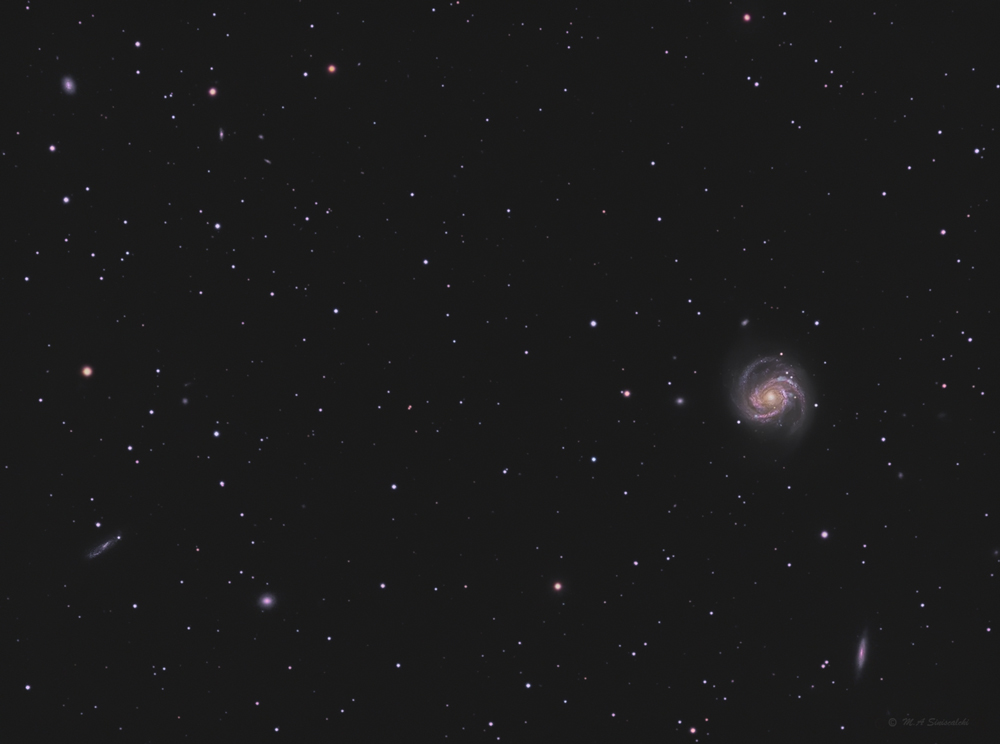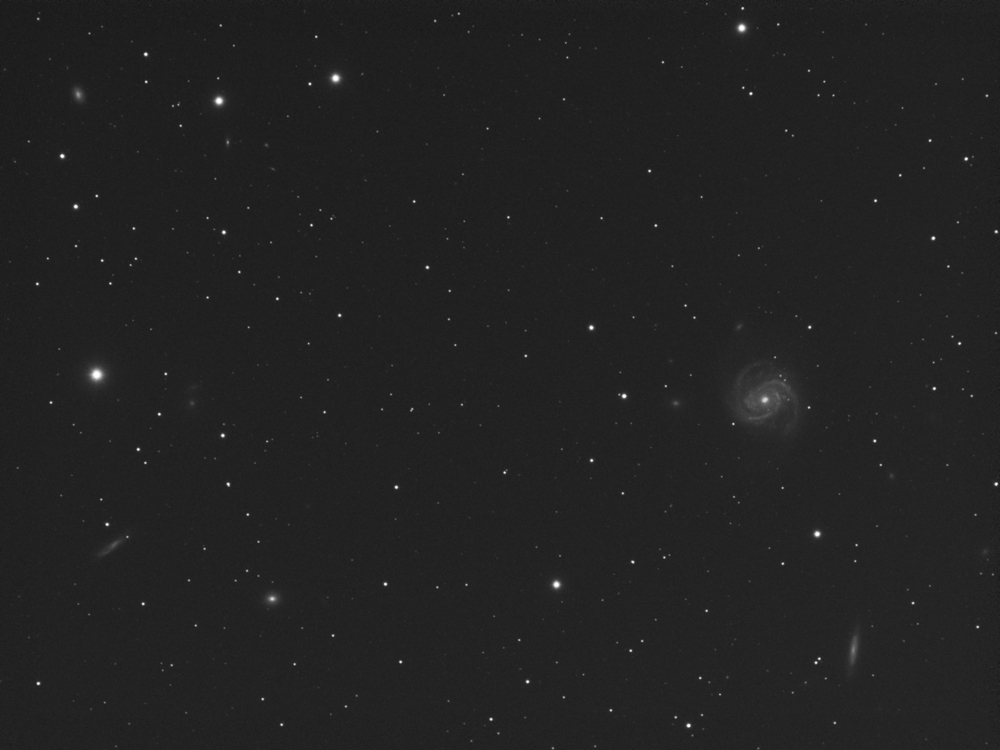
Location & Date
|
Backyard, Abbott Observatory- Long Island, NY, March 2022
|
Telescope
|
Orion ED80 F/7 APO, Moonlite focuser, iOptron GEM45G, Pegasus Falcon rotator
Image scale 2.54 arcsec/pixel
|
Camera
|
SBIG ST-2000XM
Baader L R G B filters
CCD temp -15°C
|
Exposures
|
L- 12 x 5m Red- 12 x 5m Green - 12 x 5m Blue- 12 x 5m Bin 1x1 per panel
|
Planning & Acquisition
|
Image planning - Sequence Generator Pro Mosaic Planning
Image acquisition - Sequence Generator Pro w/PinPoint & PHD2 (guiding)
|
Processing
|
CCDStack - Calibration, Normalize, Alignment, Deconvolution
Adobe PS - LRGB combine, Color adjustments, Noise reduction, Sharpen, JPEG conversion
RC-Astro Star XTerminator
Topaz Gigapixel AI - galaxy details
|
